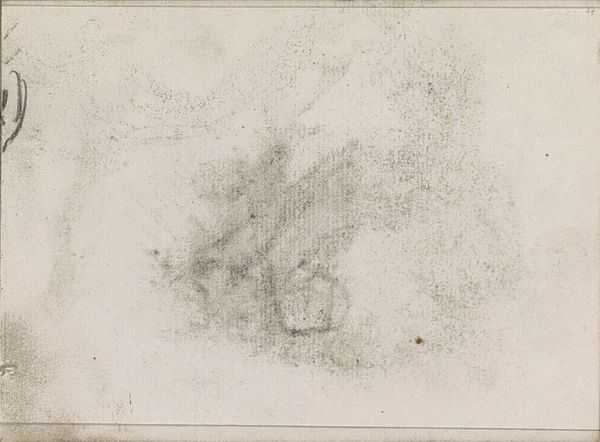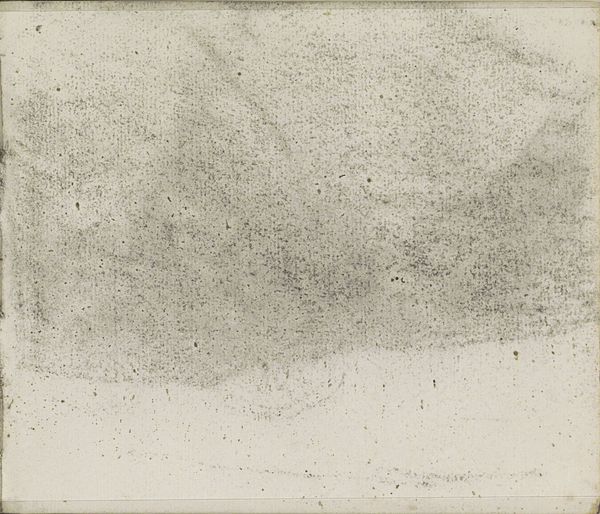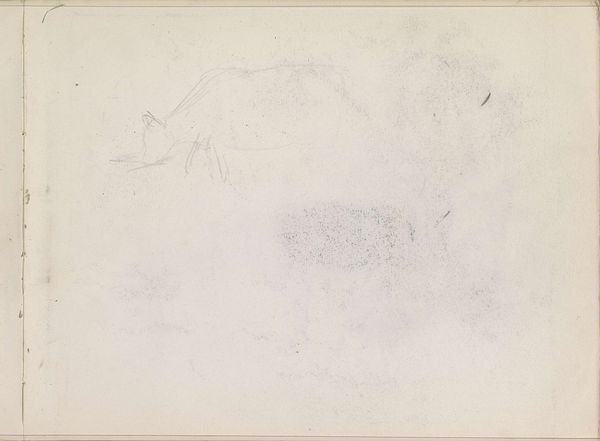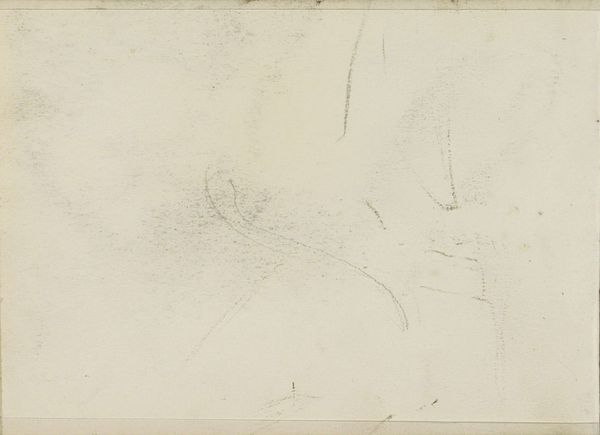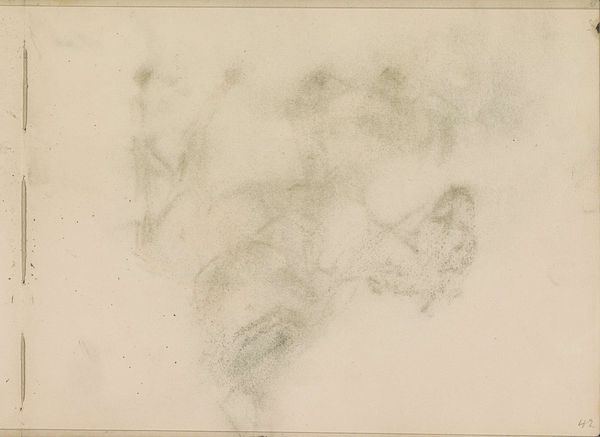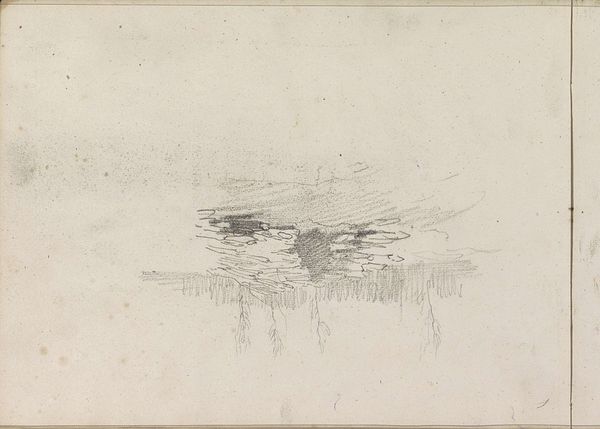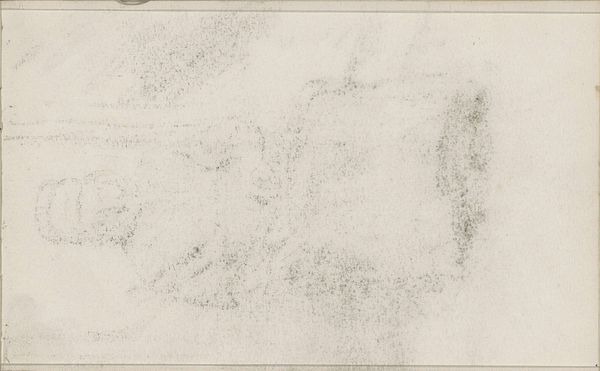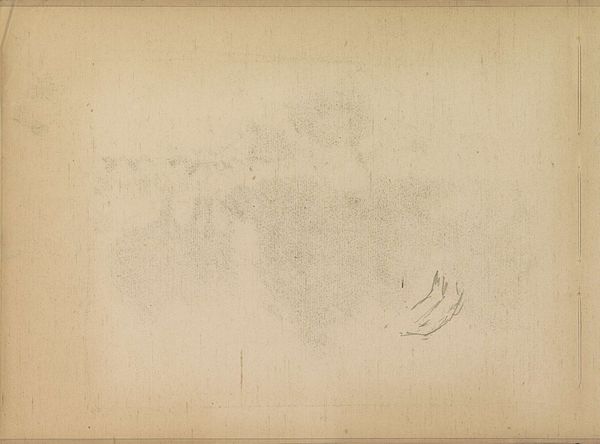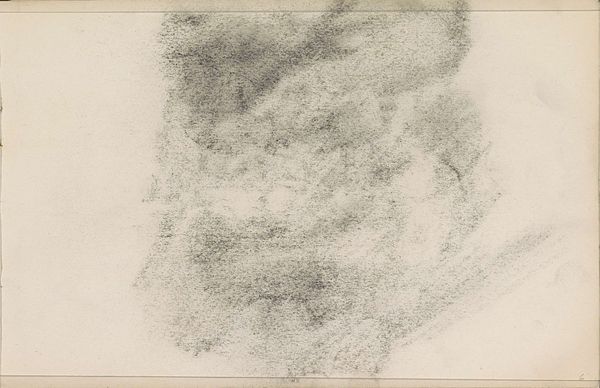
drawing, paper, pencil, graphite
#
pencil drawn
#
drawing
#
impressionism
#
pencil sketch
#
paper
#
pencil
#
graphite
#
pencil work
Copyright: Rijks Museum: Open Domain
Curator: This is Willem Witsen’s “Abklatsch van de krijttekening op pagina 7,” a pencil and graphite drawing on paper from around 1887 to 1892, housed here at the Rijksmuseum. Editor: Well, my first impression is one of… subtlety. There's so much empty space. The graphite seems to coalesce in the lower-left corner, creating a form that is indefinite yet seems evocative. Curator: Yes, “Abklatsch” means roughly "blot" or "smudge" in German, which I find incredibly telling. I wonder if it signals Witsen’s engagement with impressionistic aesthetics and his willingness to portray modernity. It would stand as an intimate glimpse into his artistic process. A shadow of thought. Editor: Agreed. The composition creates a figure/ground relationship, although, unusually, the figure appears accidental and ephemeral. Note how the artist allowed for the "accidental" mark-making. How different it is from precise academic drawing, with its defined volumes and tonal scales! Curator: Exactly. The choice of pencil and graphite over ink signals an embrace of experimentation over traditional techniques. Graphite smudges, easily erased, offer a means to explore transient feelings—fitting with the overall social mood of shifting class structures and a break from Academic art in that era. Editor: The drawing almost resembles a photographic negative. I wonder about its effect on Witsen's other work. Curator: A plausible point! I'd wager Witsen used the play of light to invoke specific themes, whether it was representing industrial anxieties or championing personal liberation. Artists during this time became progressively invested in translating subjective experiences onto canvas and paper. Editor: It prompts introspection, urging the viewer to project their interpretations. A testament to the power of minimalism, perhaps. It resists definite closure. Curator: A reminder that what we consider ‘finished’ and what we consider ‘art’ is, to a certain degree, dictated by cultural perspectives and societal consensus. Editor: Indeed. I find myself oddly moved by the drawing's incompleteness, its vulnerability. Curator: And I'm left considering its quiet act of rebellion in a rapidly changing art world.
Comments
No comments
Be the first to comment and join the conversation on the ultimate creative platform.
